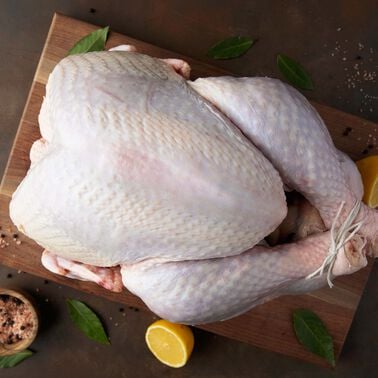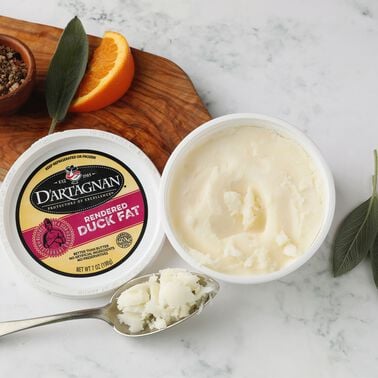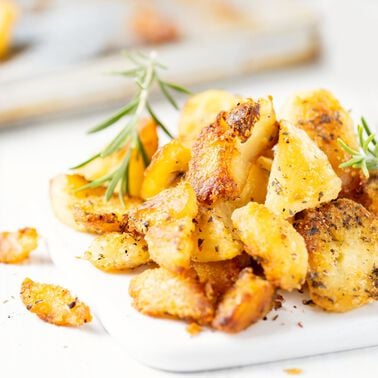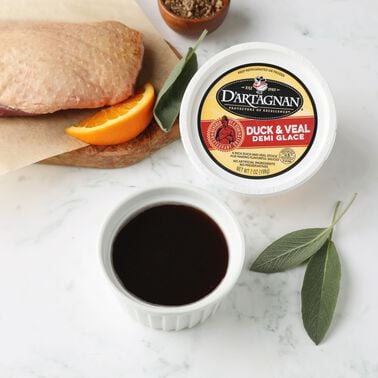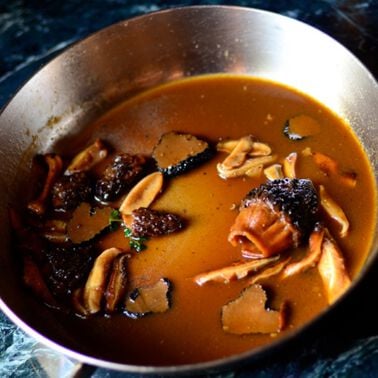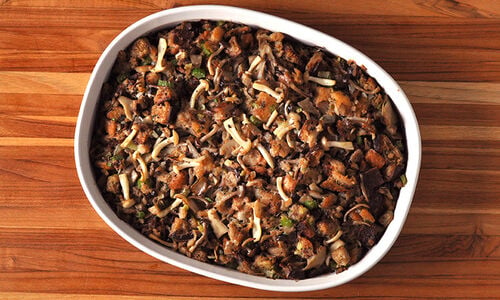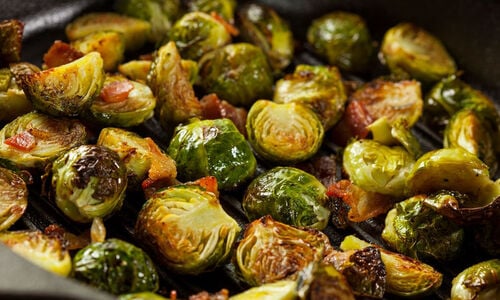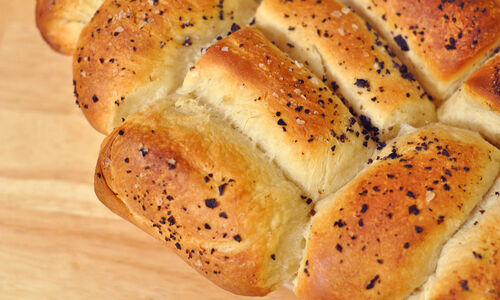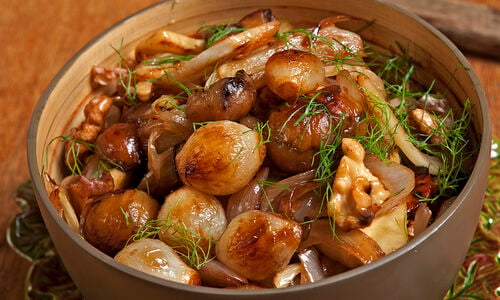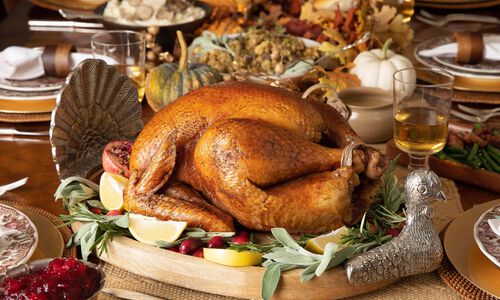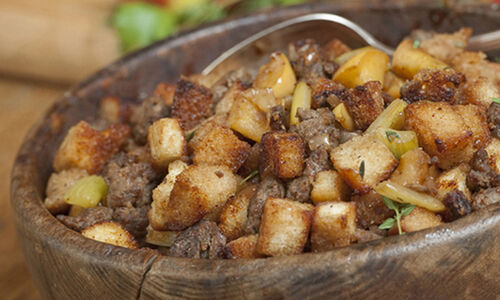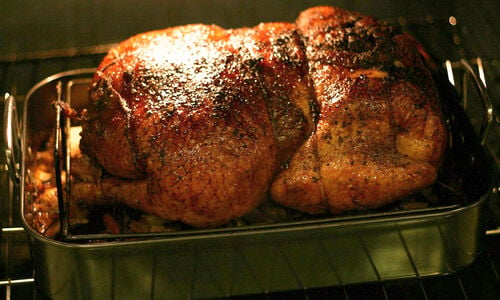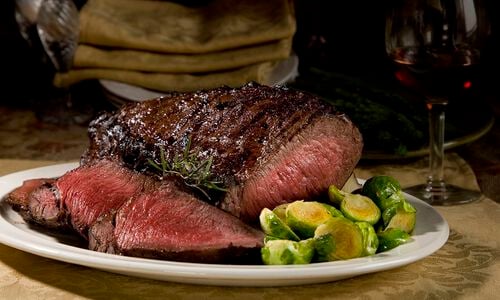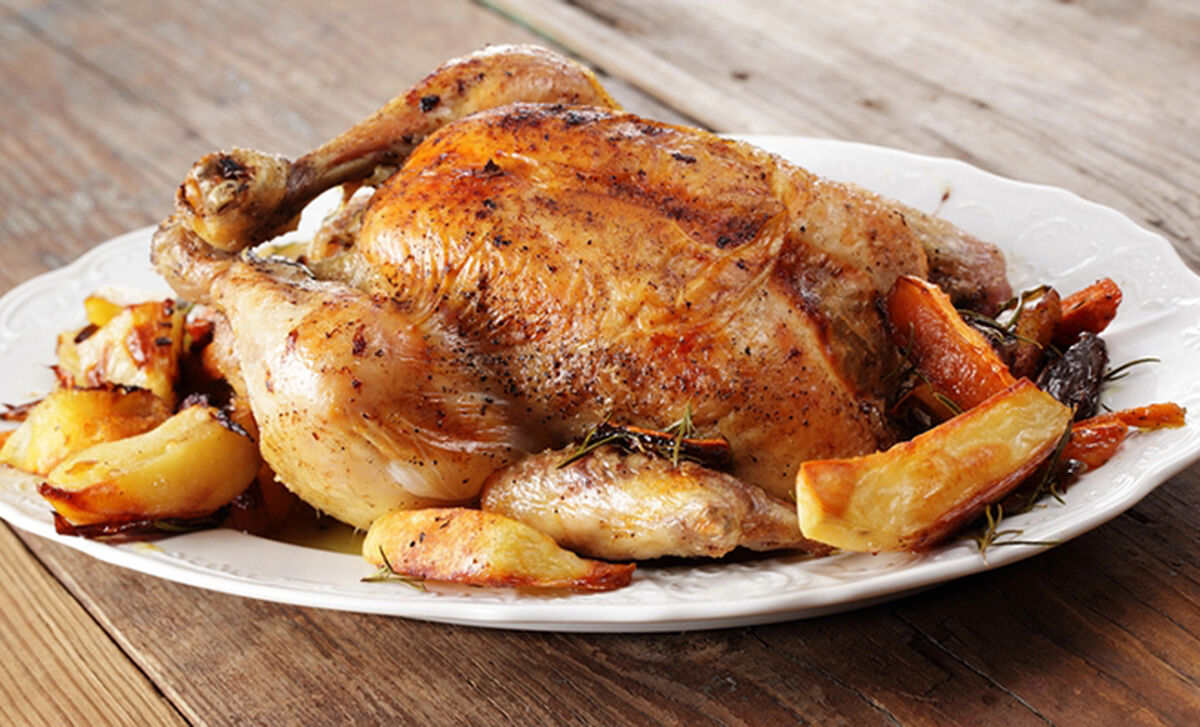
Searing for Juicy Goodness
This method of roasting uses high broiler heat to sear and brown the skin, sealing in the meat’s juices.
- Start by laying out the butterflied bird, skin side down in a shallow roasting pan, basting it generously with melted, rendered duck fat.
- Position the bird so the meat is 7 or 8 inches from the preheated element.
- Broiling uses intense heat, so if your oven has only one broiler setting, it’s likely a whopping 550°F. If you can thermostatically control your broiler, set the temperature between 350°F and 400°F.
- You want a slower searing than a full broil affords, about 16 to 18 minutes on the first side. Adjust the broiler heat accordingly. Watch the bird carefully, and baste frequently during this process.
- Once the meat has browned nicely, take it out of the oven to season with good salt, and turn the bird skin side up. Baste the skin and place the turkey back under the broiler. The skin side can burn easily, so continued vigilance and basting is required. This side will be under the broiler for about 10 to 12 minutes, give or take. This is really about browning, not a desired degree of doneness, so it is more of a visual judgment than precise timing.
Slow Roasted Finish
Once the skin has browned lightly, remove the bird from beneath the broiler, and move it to an oven that has been preheated to 350°F, be it the same oven or another. The roasting process now begins.
Unlike roasting an intact bird, a butterflied bird should be roasted in the middle level of the oven. Continue to baste every 20 minutes or so for the duration of the roasting time. Use the melted duck fat until the bird produces enough of its own pan drippings for basting.
Using this method, a 15-pound turkey should only take about 1-1/2 to 2 hours to finish cooking. Ultimately, you want an internal temperature of 165°F.
QUICK TIPS
1) A 14 to 18 pound turkey is a good size for most average ovens and standard roasting pans. You can cook larger turkeys with this method if you have an oven and roasting pan to accommodate it.
2) Clip the tip of the little nub at the ‘elbow’ of the wing because it will likely char.
3) If the bird has browned to your liking before thoroughly cooked, cover it loosely with a sheet of aluminum foil (shiny side up). Continue basting as usual.
